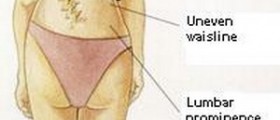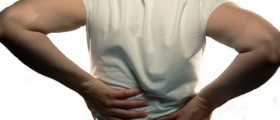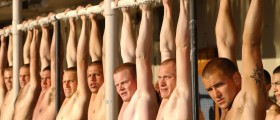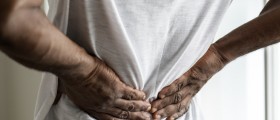
Kyphosis or kyphotic curvature is the term for the curvature of the thoracic spine (upper back). Normally, the upper spine is slightly curved outward. Lordosis or lordotic curvature is normal inward curvature of the spine. Both types of spinal curves are important for balance, flexibility, stress absorption and distribution of weight. However, excessive and abnormal spinal curves can produce back pain, stiffness, abnormal posture and altered walking patterns.
Symptoms of Kyphosis
Abnormal kyphosis is excessive outward curving of the thoracic spine. It causes a rounding of the back or humpback appearance. Abnormal kyphosis leads to a slouching posture, pain in the back, muscle fatigue and stiffness in the spine. Symptoms rarely increase in severity with time although some patients may experience exacerbation of the condition.
In patients with severe kyphosis, there is a compression of the spinal cord leading to neurological symptoms such as leg weakness, paralysis and loss of bladder and bowel control. Difficulty breathing and chest pain are often present with severe kyphosis due to decreased lung capacity. Types and Causes of Kyphosis
Abnormal kyphosis is classified into three types, postural kyphosis, Scheuermann’s kyphosis and congenital kyphosis.
Postural Kyphosis
Postural kyphosis also known as “round back” is the most common type of abnormal kyphosis and is associated with poor posture and weakening of the muscles and ligaments of the back. The spine does not have structural abnormalities. Postural kyphosis is most often first detected during adolescence and is most common in girls. It can cause pain and muscle fatigue but rarely progresses and can be easily corrected with exercises and proper posture. Scheuermann’s Kyphosis
Scheuermann’s kyphosis is also known as adolescent kyphosis or juvenile kyphosis. It is usually diagnosed between the ages of 10 and 15. It occurs due to wedging together of several bones of the vertebral column in a row. Kyphotic curve is greater than 50°. This type of kyphosis is often accompanied by scoliosis. Exact cause of Scheuermann’s kyphosis is unknown.
Congenital Kyphosis
Congenital kyphosis arises from birth defects of the spine, such as abnormal or incomplete formation of the spine. Congenital kyphosis results from a fusion of several vertebrae and leads to severe abnormal kyphosis. This type of kyphosis is often accompanied by heart and kidney problems.
Kyphosis can occur due to other causes as well. It can result from other medical conditions such as osteoporosis, degenerative arthritis, ankylosing spondylitis, a spine infection and spine tumors. Injury to the spine and spine surgery can also lead to abnormal kyphosis.

















Your thoughts on this
Loading...